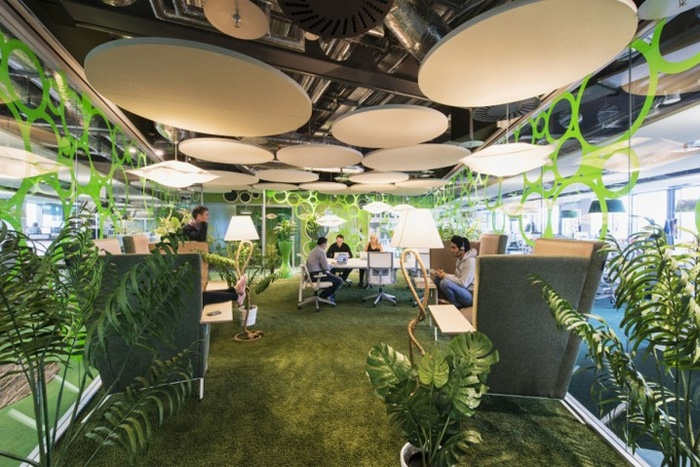Sustainable places for everyone
Romilly Madew, Chief Executive Officer
Now, more than ever, people want to know where their ‘stuff’ comes from.
Increasingly, we want assurance that our beauty products aren’t tested on animals, our shoes and clothes aren’t made in sweatshops, our food isn’t genetically modified, our coffee is organic or Fairtrade, and our meat has the Heart Foundation’s tick of approval.
This demand for transparency is having a profound impact across entire supply chains. Selling a product is no longer about ‘biggest, fastest, cheapest’, but also about what is best for people and best for the planet.
When it comes to buildings, people want to know that the timber isn’t sourced from rainforests, that the paint isn’t dripping with harmful chemicals and that the building isn’t an energy- and water-guzzler. Importantly, both individuals and corporations now want to ensure that any claim about the sustainability of their building is verified with independent proof.
This is where Green Star comes in. Launched in 2003 by the Green Building Council of Australia, Green Star is now an internationally-recognised sustainability rating system that is transforming the way our built environment is designed, constructed and operated.
Green Star is a national, voluntary rating system, and more than 800 building projects around Australia, including and existing buildings, interior fitouts and entire communities, have achieved Green Star ratings after being assessed against a range of environmental impact categories, from water and waste, to energy and emissions.
The Value of Green Star(2013) report, found that on average, Green Star-certified buildings:
- produce 62% fewer greenhouse gas emissions than average Australian buildings
- use 66% less electricity than average Australian buildings
- consume 51% less potable water than if they had been built to meet minimum industry requirements
- Recycle 96% of their waste, compared with 58% for the average new construction project.
A range of international reports have also confirmed that green buildings reduce operational costs, improve return on investment, boost productivity, health and wellbeing and enhance corporate reputation.
The Building Better Returns report (2011) found that Green Star-rated buildings deliver a 12 per cent ‘green premium’ in value and a five per cent premium in rent, when compared to non-rated buildings. The Property Council/IPD Australian Green Property Index(June 2014),found that Green Star-rated CBD office assets outperformed the broader CBD office market by 100 basis points.
Modelling from Australia’s CitySwitchprogram has found that a typical financial or professional services firm operating from a 5 Star Green Star-rated office of 5,000 square metres could save $18,200 a year in electricity costs alone, not to mention massive savings in reduced absenteeism, employee retention and increased productivity in the region of $4 million a year.
Green Star buildings are recording productivity increases of up to 15 per cent, which is perhaps why Colliers International’s Office Tenant Survey (2012) has found that 95 per cent of tenants want to be in a green building. ‘Green space’ is now one of the top four attributes tenants look for – along with bike racks, childcare facilities and a gym.
The World Green Building Council’s Business Case for Green Building (2013) finds that a minimal two per cent upfront cost to support green design can result in average life cycle savings of 20 per cent of total construction costs – more than 10 times the initial investment.
Each year, the Dow Jones Sustainability Index is led by Australian companies, such as Stockland, GPT Group, Investa and Lend Lease. Similarly, the Global Real Estate Sustainability Benchmark (GRESB), which now reports on 56,000 assets worth US$2.1 trillion dollars in value, identifies Australia as the global leader.
But sustainable buildings aren’t just for office workers or for people who can afford sparkling penthouses overlooking the harbour. We are proud of the many Green Star projects that support better environmental, economic and social outcomes for everyone. The Common Ground housing projects in Sydney and Melbourne demonstrate that a sustainable building is for rough sleepers as much as it is for investment bankers.
Similarly, green features at the Lilyfield Housing Redevelopment in Sydney have reduced residents’ electricity bills by 25 per cent while at Monash University’s Briggs Hall and Jackomos Halls, cash-strapped students are paying 45 per cent less for their electricity. The Redfern Housing Redevelopment project, also in Sydney, gained an ‘Innovation’ point for specifying that a minimum of 20 construction workers on the project were indigenous. This created jobs, enhanced the ‘green collar’ skills of the local community, and spread wide the message that everyone deserves a sustainable home.
And the Green Star story is about more than just buildings. If we were to plot the evolution of the Green Building Council of Australia over last 12 years, we’d see theearly emphasis on the environmental benefits of green building such as kilos of carbon, litres of water and tonnes of waste evolve to consider economic benefits such as payback periods, cost savings, asset values and vacancy rates. As we’ve matured, we’ve expanded our thinking to recognise and reward social return on investment such as shared value, improved productivity, health and wellbeing, and skills development.
The 30-odd project teams working with us to achieve Green Star – Communities ratings, the local governments achieving Green Star ratings for their community centres and libraries, the state governments certifying healthcare facilities and the school principals educating a whole generation of environmentally literate students are committed to building communities that are diverse, fair, inclusive and sustainable.
Today, we are increasingly talking the language of social sustainability – about how our buildings benefit people. Our next great challenge is to put a value on the social capital to be gained from green building.
We will continue to adapt Green Star so that it remains robust and relevant. Why? Because everyone should have the opportunity to learn in a green school, work in a green office, or live in a green home – and because Green Star is the mechanism to help us create and define sustainable places for everyone.





 This information will never be shared to third parties
This information will never be shared to third parties